EDITOR’S NOTE: Traveleater Ana Raicic – a Slovenian food expert from Izola, Slovenia – shares with us 12 dishes you need to try on your next visit to Ljubljana.
If you’re planning a visit to Slovenia, then you’re going to be pleasantly surprised by the vast diversity of the country. In spite of covering an area of only about 20,000 square kilometers, Slovenia boasts a wonderful variety of climates and landscapes that resonates in Slovenian cuisine.
You’re most likely to find traditional Slovenian food in Slovenian restaurants called gostilna. These restaurants focus on traditional, fuss-free Slovenian dishes and are scattered all over the country.
SLOVENIAN FOOD QUICK LINKS
If you’re visiting Slovenia and want to learn more about Slovenian food, then you may be interested in joining a food tour.
TOURS & OTHER SERVICES
- Slovenian Food/Drinking Tours: Food and Drinking Tours in Slovenia
- eSIM: Slovenia eSIM
Save This on Pinterest!
No time to read this article on traditional Slovenian food? Click on the save button and pin it for later!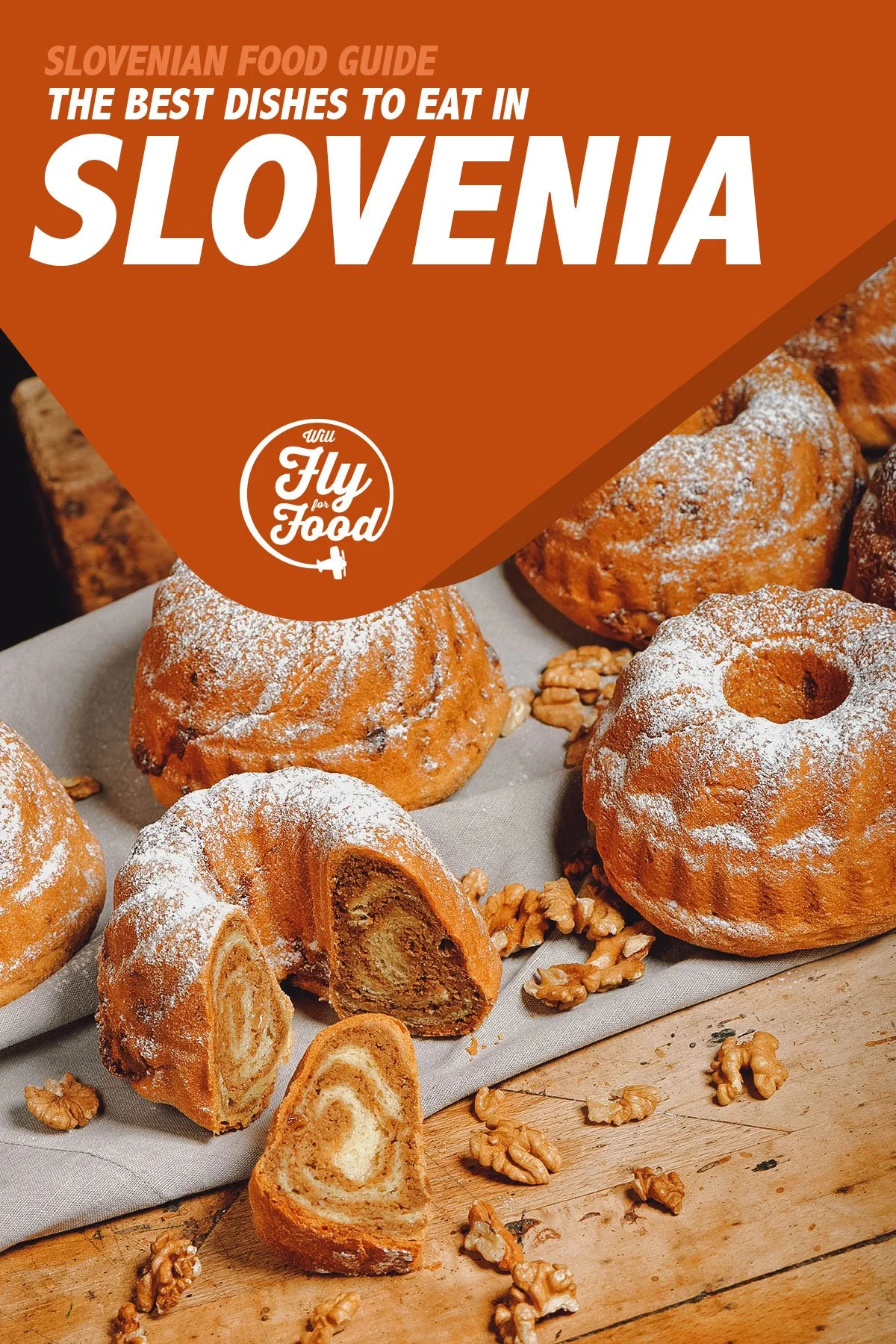
Photo by vision.si
WHAT IS TRADITIONAL SLOVENIAN CUISINE?
Slovenia’s history is closely intertwined with that of the Austrian Empire and the same goes for Slovenian food. The influences of the Balkans, Italy, Austria, and Hungary are felt everywhere, but most distinctly in the regional cooking differences.
Sometimes, these regional differences are manifested simply as different names for the same dish. Other times, it could be different fillings or a difference in preparation for the same dish.
Slovenian food is heavily focused on staples like meat, humble vegetables like turnips, cabbage, potatoes, and beans, as well as grains, like buckwheat. It’s also heavily seasonal, with produce like mushrooms, chestnuts, asparagus, and dandelion featuring prominently when they’re in season.
Dandelion, in particular, is a prized seasonal ingredient in Slovenian cuisine. It’s been gathered for centuries in spring and is commonly used as a salad ingredient, one of the most popular being dandelion and potato salad.
In desserts, Slovenian cuisine boasts a number of traditional pastries made out of enriched dough. At one time, they were strictly festive dishes but they’ve since become more available in everyday life.
For dessert fillings, the most commonly used ingredients are walnuts, hazelnuts, raisins, quark cheese, apples, and wild berries.
MUST-TRY SLOVENIAN DISHES
1. Idrijski Žlikrofi
Idrijski žlikrofi are regional dumplings made with a potato filling. They’re an EU-protected Slovenian dish that originates from the mining town of Idrija and its surroundings. The dumplings can be an appetizer or a main dish (or part of).
The size of an authentic žlikrof is fixed at 3 cm in length and 2 cm (1.2″ x 0.8″) in height. Žlikrofi are made of simple pasta dough that’s rolled out and filled with a cooked and seasoned potato filling mixed with sauteed onions. The dumplings are then molded into the traditional hat shape and cooked in boiling water.
Extremely tasty by themselves, you can normally get them in a meat or vegetarian version with lamb and/or vegetable sauce in most restaurants in the Idrija area.
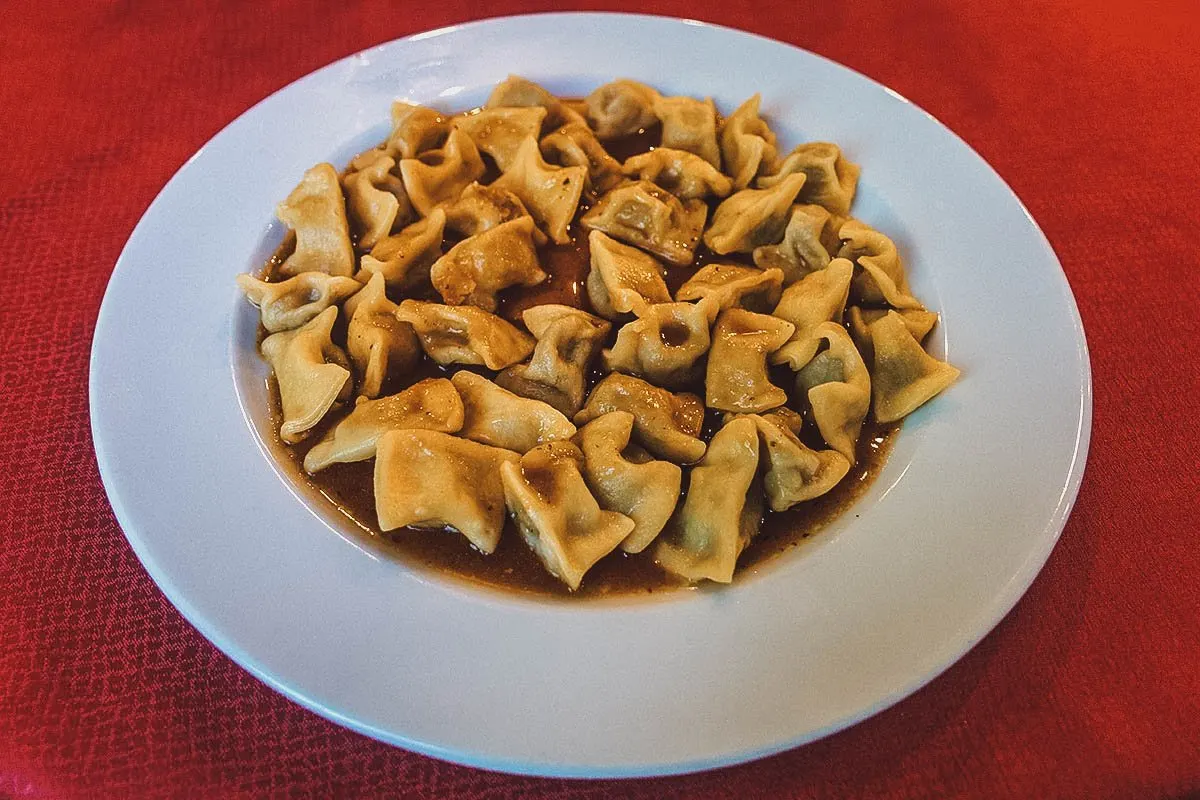
Photo by mathes
2. Ajdovi Žganci
Ajdovi žganci (buckwheat spoon bread) is widely considered to be a national dish in Slovenian cuisine. Aside from buckwheat flour, this Slovenian spoon bread can be made with potato or wheat flour as well.
This quick dish is made by dry-frying buckwheat flour for a couple of minutes. The fried flour is then added to boiling salted water and left to cook for a couple more minutes. The cooked sticky dough is then brought out of the pot and shredded into smaller pieces with a fork, giving the dish its traditional žganci appearance.
There are some regional differences among žganci in Slovenia. For example, in the northern Gorenjska region, they are drier and almost breadcrumb-like, while in the Štajerska region, they more closely resemble dumplings or spoon bread.
You’ll most likely find žganci in traditional Slovenian restaurants around the Gorenjska and Štajerska regions and in mountain huts as a topping for hearty mushroom soup or as a standalone dish with sour milk. Humble in origin, žganci are a wonderful vegetarian staple.
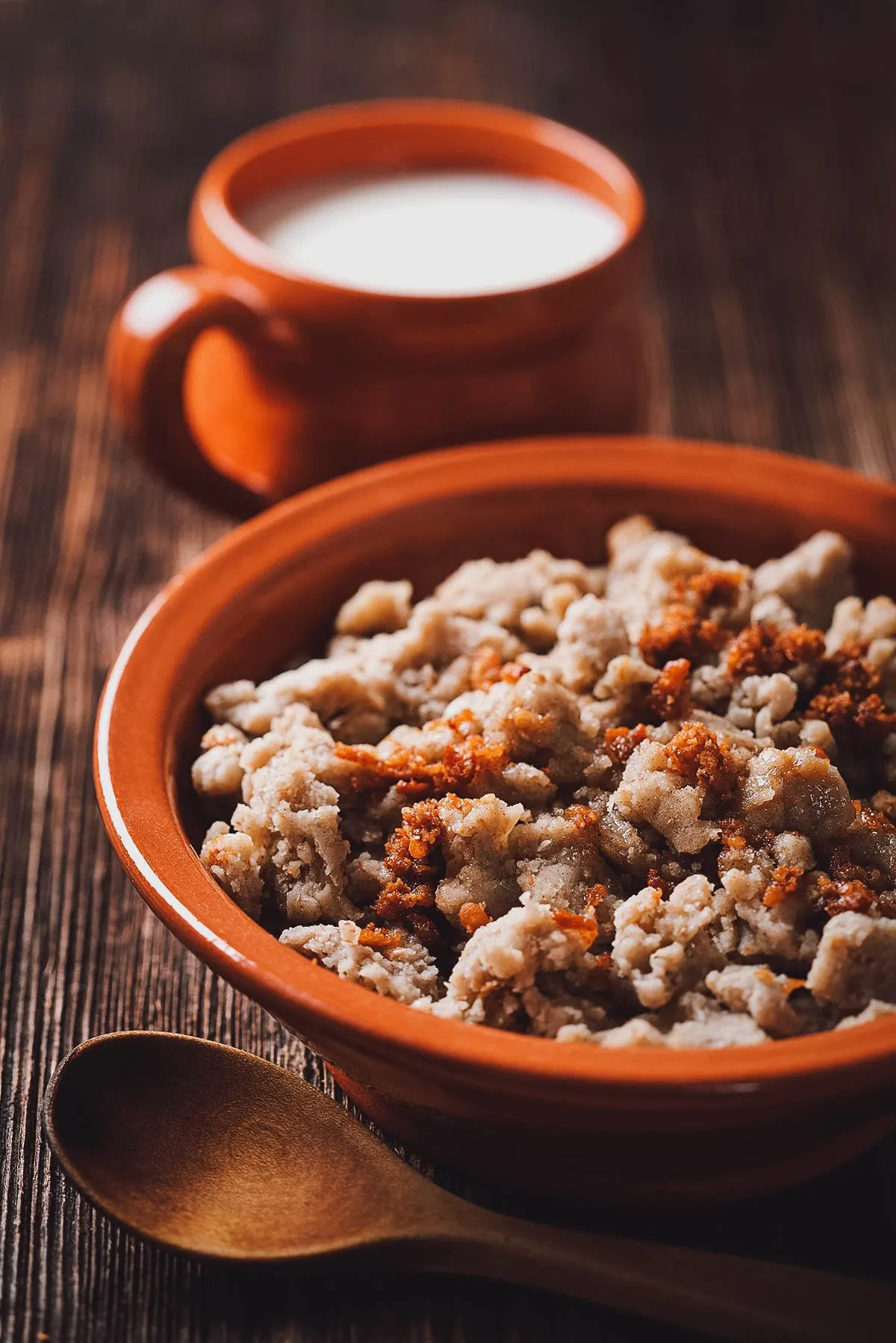
Photo by photodesign
3. Obara
Obara is a hearty meat and vegetable soup originating in the Štajerska region of Slovenia. It differs from other Slovenian stews like barley stew, goulash, and yota stew because it includes a variety of vegetables and different meats.
The stew usually takes the name of whatever meat was used to prepare it, the most common types being chicken obara and beef obara. The most common vegetables include carrots, turnips, green beans, peas, and onions.
Traditionally, obara was served as a festive meal on Sundays and on Slovenian holidays but today, it’s increasingly prepared as an everyday dish. In a traditional Slovenian gostilna, you’ll typically find it served with buckwheat or potato žganci to make the dish heartier.
Obara is another traditional Slovenian dish that’s best enjoyed on a cold winter’s day. Check out our Obara recipe if you’d like to make this hearty one-pot stew yourself.
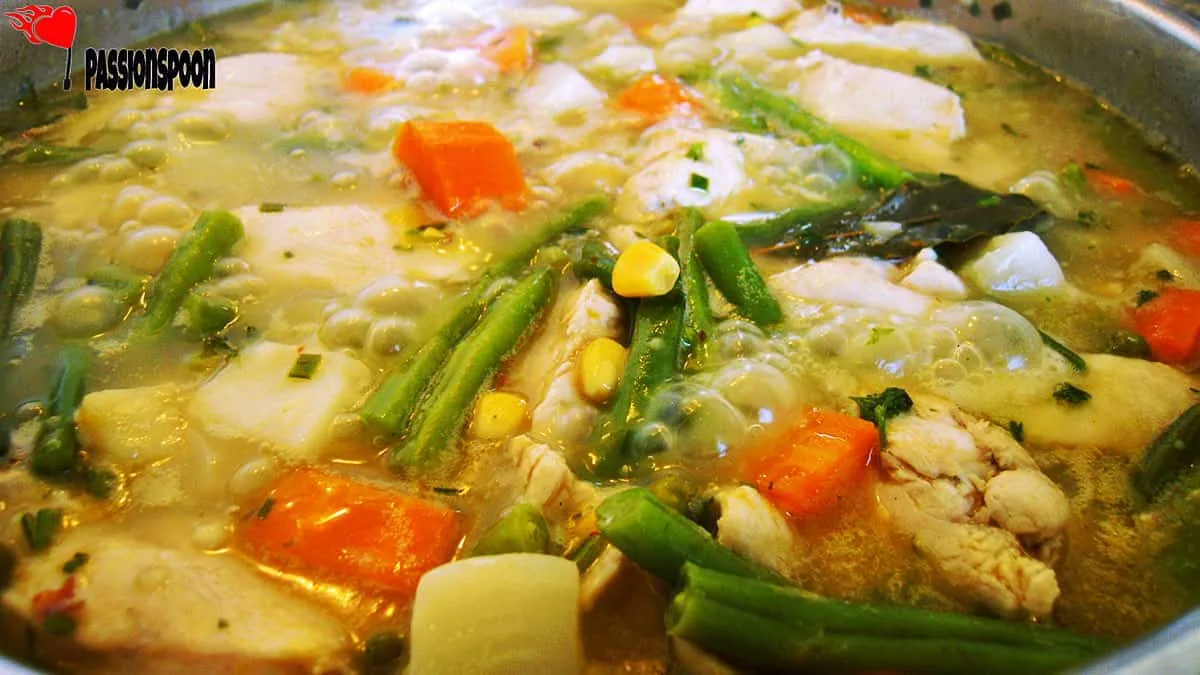
4. Pohorski Pisker
Pohorski pisker is a meaty stew from the region of Pohorje in Styria in the northeastern part of Slovenia. Born in the hills of Rogla, the stew is a combination of at least three types of meat, mushrooms, barley, and potatoes.
It wouldn’t be a Slovenian dish if varieties didn’t exist. With pohorski pisker, it’s mostly in the types of meat and vegetables used in its preparation.
It’s said that authentic pohorski pisker needs to be cooked over an open flame and with continuous stirring, so it doesn’t stick to the bottom of the pot. If you’re looking to try the most authentic version, then try heading to the festival dedicated to this traditional dish that’s held in Pohorje every summer.
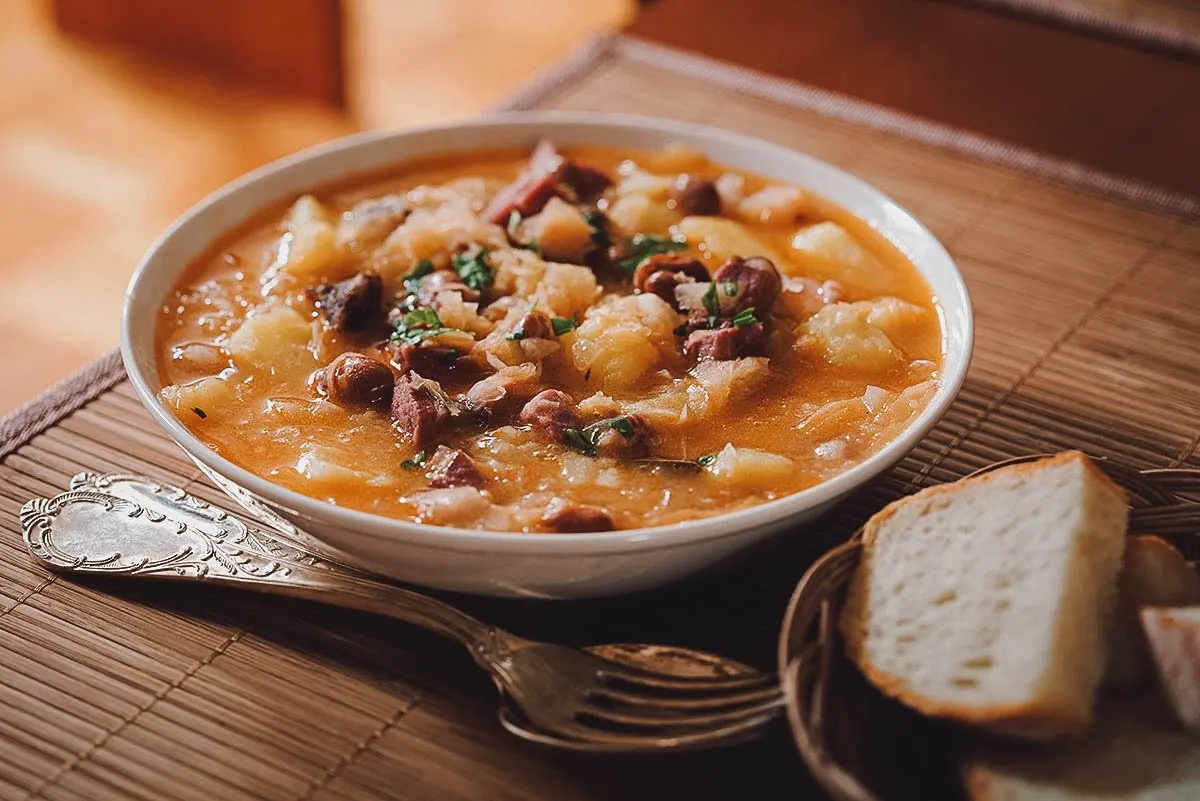
Photo by photodesign
5. Golaž
Golaž or goulash is a Slovenian meat stew with Hungarian and Austrian origins. It’s made with equal parts diced onions and beef flank chunks, with tomato paste and paprika added for color and taste.
The onions get sauteed over a low flame until they’re nice and soft before the goulash spices are added. Most commonly, these spices include marjoram, caraway seed, sweet and sharp paprika, and a couple of bay leaves. The bay leaf is the most important as it wouldn’t be goulash without it.
After frying the spices, the beef chunks are then added and braised in tomato sauce and red wine. The longer you braise the stew, the tastier and thicker it becomes. It’s said that goulash is always better the day after.
Traditionally, goulash is served with a bread roll or with a side of polenta, bread dumplings, pasta, potato salad (or puree), or spoon bread.
One of the most popular meat dishes in Slovenia and other European countries like Czechia, Slovakia, Romania, and Serbia, this hearty dish can be found on the menu of most traditional Slovenian restaurants and in many mountain huts. It’s best enjoyed after a long day of work or a long hike.
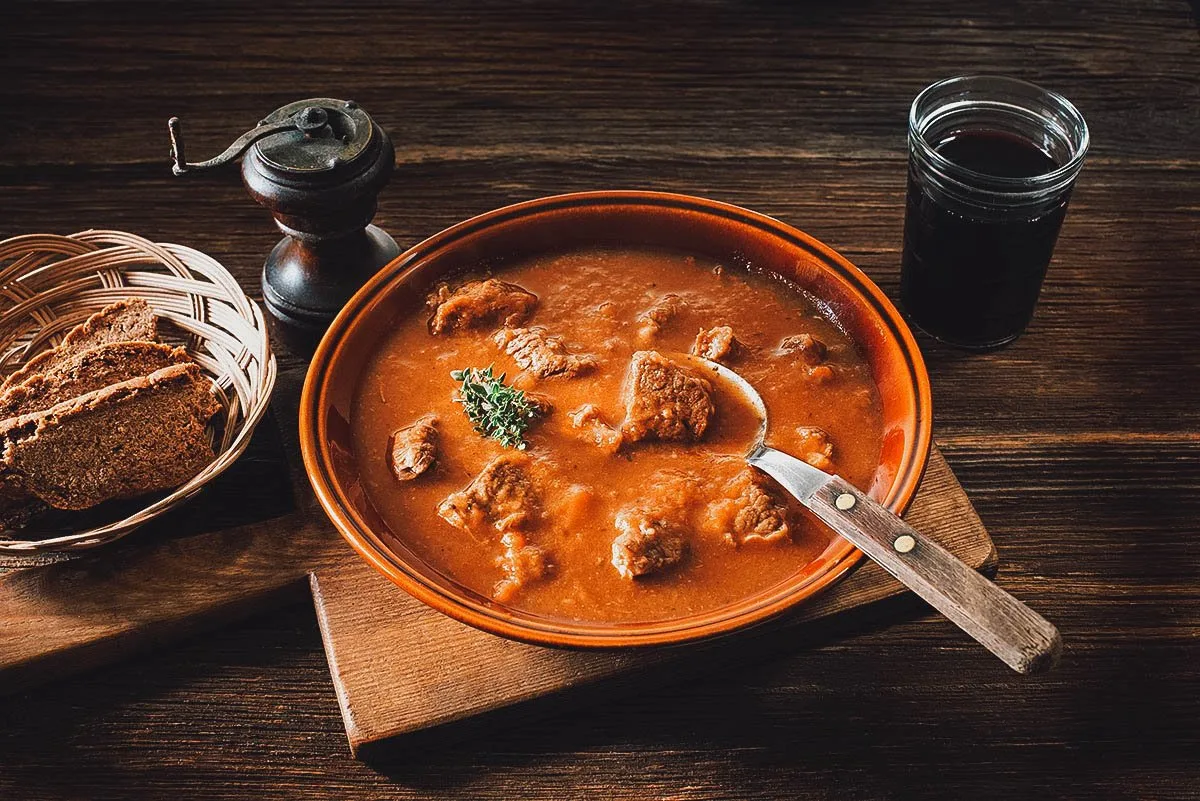
Photo by photodesign
6. Kranjska Klobasa
Kranjska klobasa is a traditional Slovenian sausage that boasts EU protection. This protected Slovenian food carries the name of the largest historical Slovenian region of Kranjska or Carniola. It’s a lightly smoked, semi-cured sausage that needs to be cooked before eating.
Historically, kranjska klobasa was made at the time of pig slaughter in late October or November. It’s specifically made with 75-80% pork meat and 25-20% cured bacon. The sausages are then lightly smoked with beech wood.
Traditionally, the sausage is eaten warm with a side of sauerkraut or sour turnips, or cooked and then cooled down with grated horseradish, mustard, and a bread roll. Today, they’re often added to barley stews or hearty soups.
You’re most likely to come across kranjska klobasa on the menus of traditional Slovenian restaurants scattered around the Gorenjska and Štajerska regions. Like goulash, kranjska klobasa is a hearty dish that’s best enjoyed on a cold winter day or in a mountain hut after a long day of hiking.
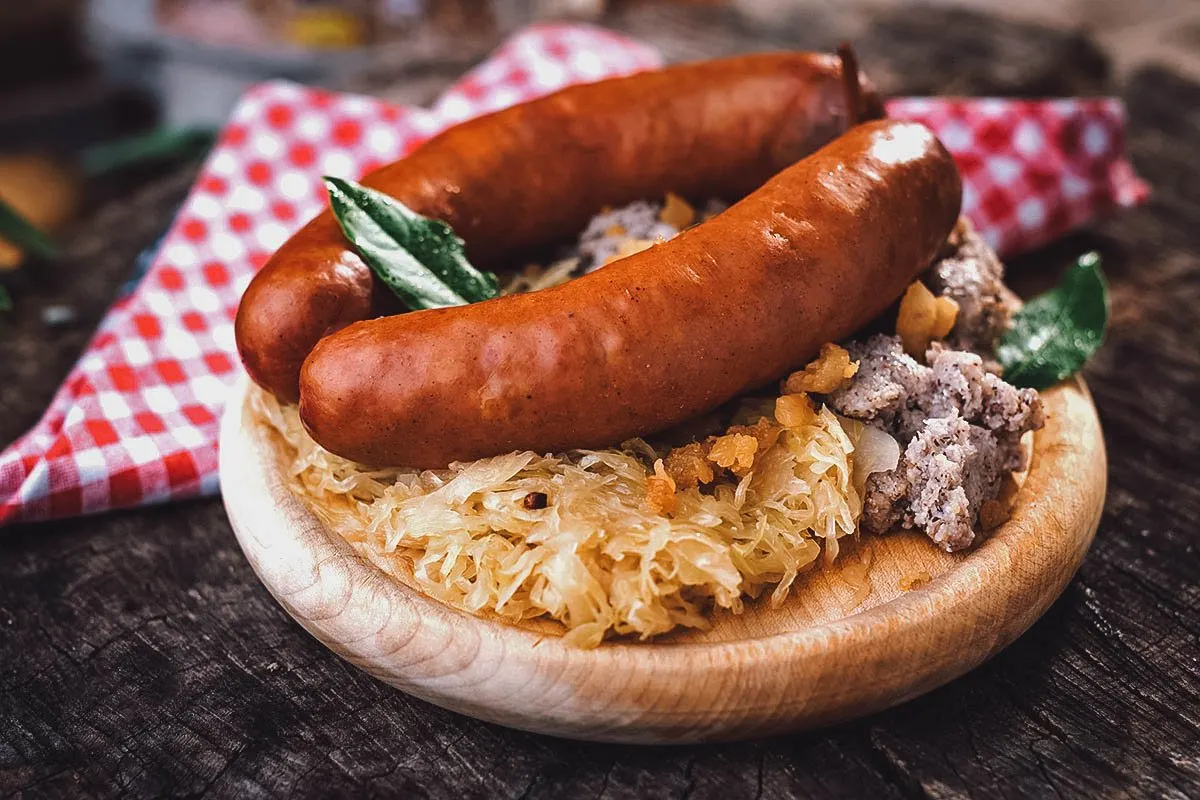
Photo by fotovincek
7. Ocvirki
Ocvirki is the Slovenian name for pork cracklings. The making of pork crackling is a part of a wider tradition called Koline.
Koline refers to the time when farmers would slaughter pigs before winter. In an effort to use all parts of the pig, pork rinds and fat would be used to make pork cracklings.
Pork cracklings are a byproduct of rendering the lard. The process involves boiling the rind and fatty parts to render down the fat and preserve it for cooking. Meanwhile, the skin and bits of meat would fry in the boiling fat and become deliciously crunchy.
Today, cracklings are often served as a topping for žganci. They can be enjoyed warm with meat or eaten cold as a snack. Most often, you’ll be able to taste them in mountain huts and in traditional Slovenian restaurants in autumn.
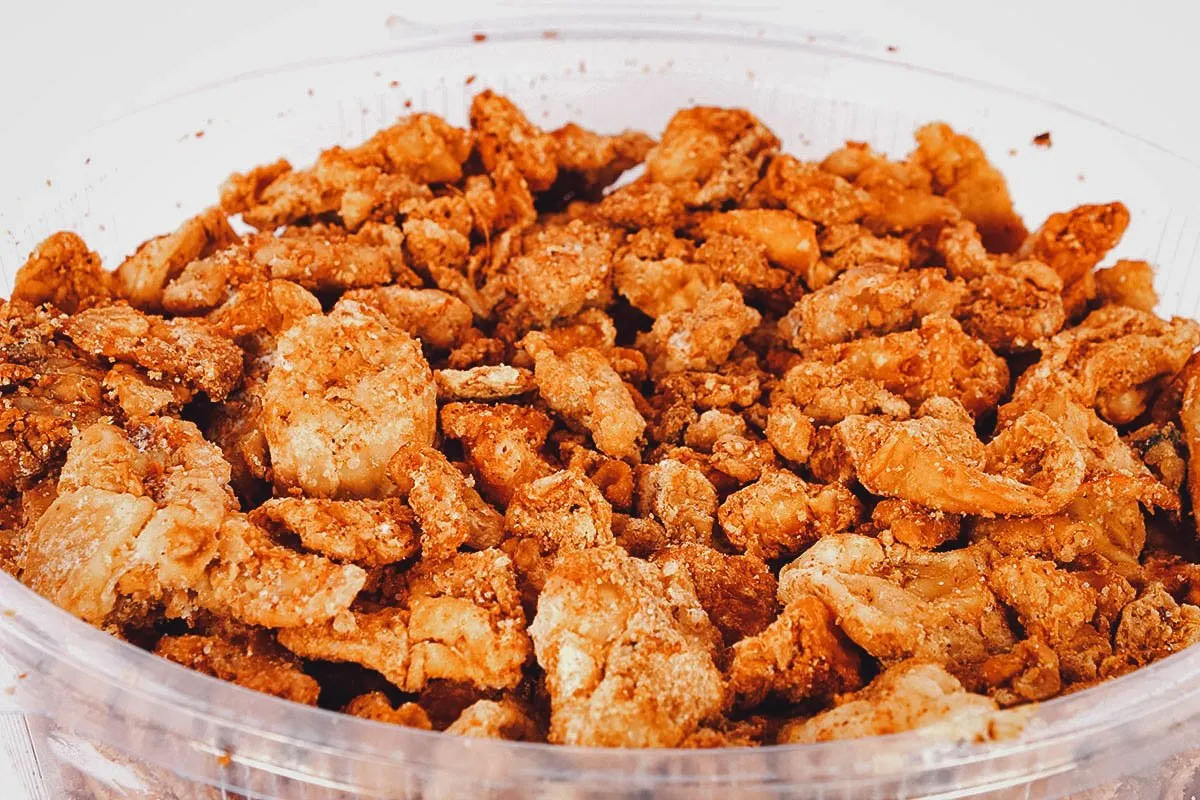
Photo by Boris15
8. Potica
No list of popular Slovenian food can ever be complete without potica. Perhaps the most well-known of Slovenian dishes and desserts, it’s made out of enriched leavened dough that’s flattened and filled before being rolled into a log and baked, either in a round mold or in logs.
Potica comes with a variety of fillings, the most traditional being ground walnuts. Aside from walnuts, other traditional fillings include sweet tarragon, poppy seeds, and hazelnuts. These days, Nutella and coconut are also commonly used.
Like most Slovenian dishes, potica also has regional variations. You can enjoy a traditional luštrkajca from Idrija made with lovage filling or a savory variety filled with chives or pork cracklings. In the Goriška Brda region, you can try a regional version made with a filling of walnuts, pine nuts, and raisins.
Even today, potica brings an air of festivity to a Slovenian table and is a staple at any kind of celebration.
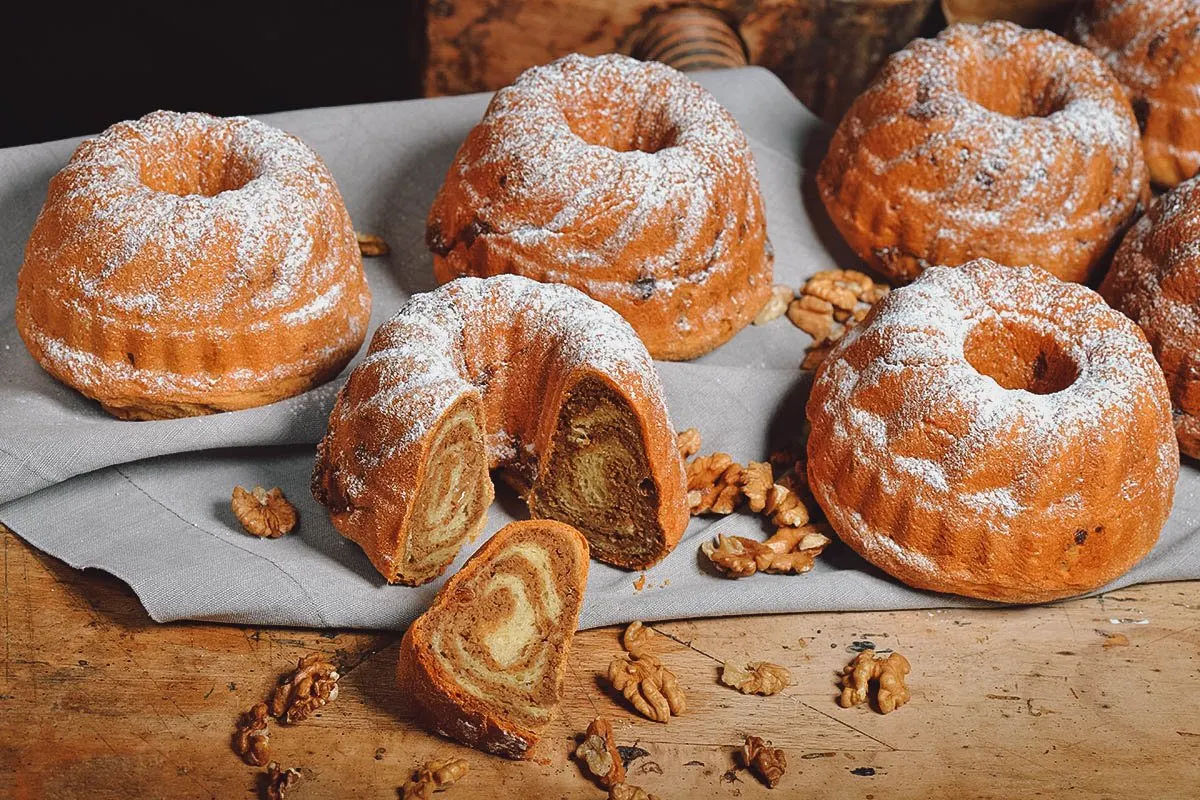
Photo by vision.si
9. Prekmurska Gibanica
Prekmurska gibanica is a traditional Slovenian layer cake that’s protected by the EU. Because of that, there’s a very strict set of rules on the fillings and how they should be arranged, even coming down to the height of the cake.
The cake is made up of a base layer of shortcrust dough, followed by a layer of filo pastry. Then it’s time for the fillings which are layered in this exact order – poppy seeds, cottage cheese, walnuts, and then apples.
For it to be a true Prekmurska gibanica, it needs to have eight layers of filling, with two layers of every filling.
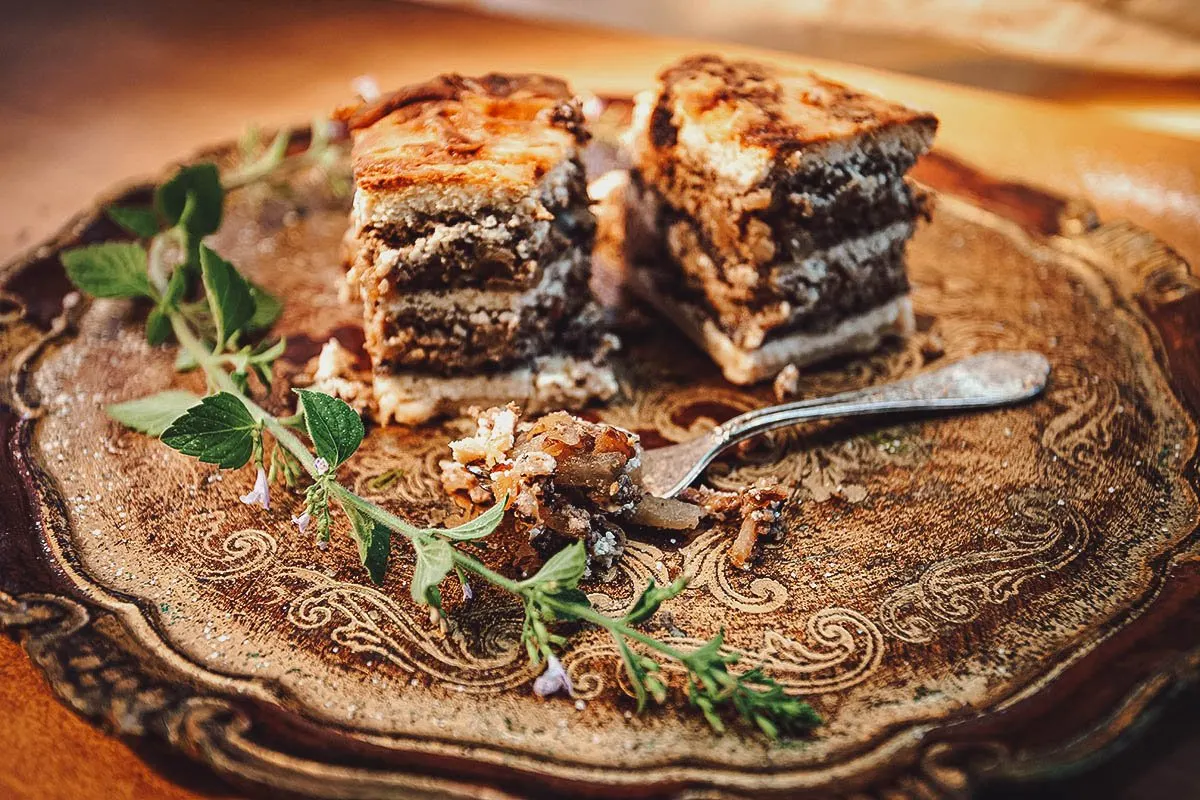
Photo by fiorellamacor
10. Kremna Rezina
Kremna rezina is a typical Slovenian dessert that was popularized in Bled in 1953, in a hotel at one of the most well-known Slovenian landmarks – Lake Bled. It was first made at the Park Hotel, where you can taste the original to this day while taking in the view of the wonderful lake.
The name translates to “cream slice”, to describe a layer of pastry cream and a layer of whipped cream sandwiched between two layers of crisp puff pastry. The slice is topped off with a generous sprinkling of icing sugar.
Kremna rezina is extremely common and you can taste it at almost any pastry cafe in Slovenia, so be sure to grab yourself a slice. If you visit Lake Bled, then stop at the Park Hotel to try the original. You can decide for yourself if it’s better than the imitations you get around the country.
Aside from Slovenia, kremna rezina is popular in many other European countries as well, where it goes by different names like kremowka papieska (Poland), cremeschnitte (Germany), krémes (Hungary), and kremšnite (Croatia).
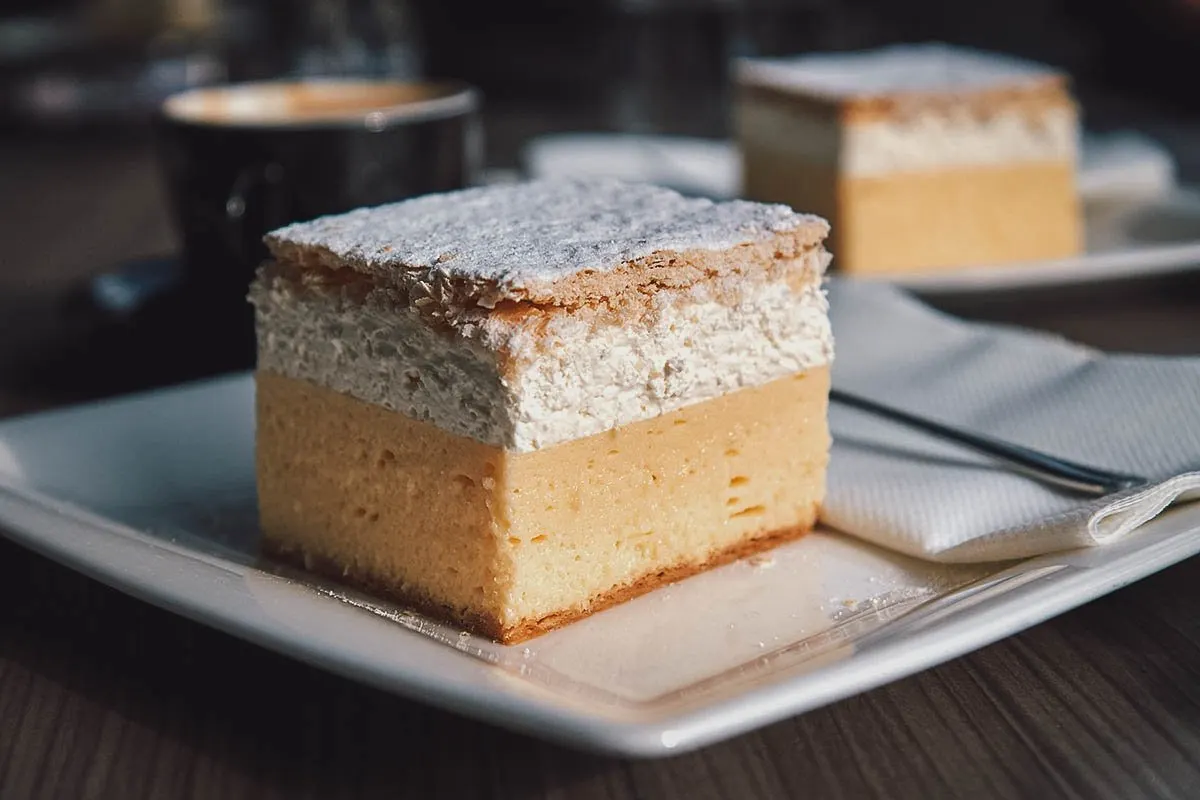
Photo by NedoB
11. Štruklji
Štruklji can be loosely described as a dish made out of dough and filling.
They are one of the few Slovenian traditional dishes that appear in all Slovenian regions. It used to be mainly a festive dish, one that was on the table only during holidays or important celebrations. It’s difficult to define because a štrukelj takes as many shapes as there are Slovenian regions.
Štruklji is made with a special filo dough that’s thicker than baklava dough, leavened dough, or even pasta dough. The fillings can be sweet or savory so štruklji can be enjoyed as a main meal, a side dish, or for dessert.
The most common fillings include all the most common Slovenian fillings like apples, cottage cheese, walnuts, and tarragon. The štruklji dough is most commonly made out of wheat or buckwheat flour, with the third most common variety being potato. A traditional savory combination is buckwheat dough with a cottage cheese filling – a classic side to the Sunday roast.
Any variety of dough and filling can be cooked, baked, or even fried. Most commonly, the dough for štruklji will be rolled out, then a filling will be spread over it. Then, it will be rolled into a log and cooked or baked like that. After cooking and resting, the log will be cut into slices and topped with ingredients like sour cream and cottage cheese.
Some interesting regional varieties you should try are dumplings like kobariški štruklji – a ravioli-like dumpling filled with a rich mix of ground walnuts. It’s seasoned with spices and lemon zest before being cooked in boiling water.
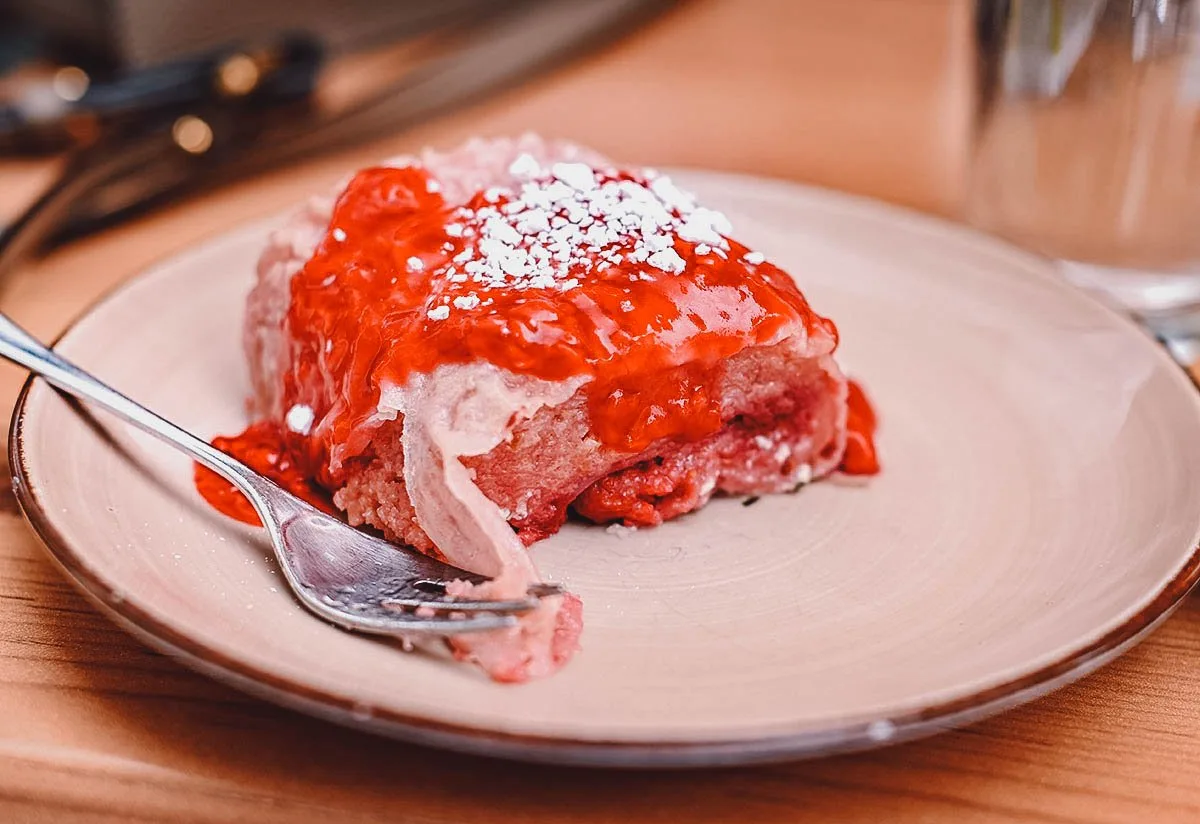
Photo by [email protected]
12. Krofi
Krofi are a sweet fried dough treat and a type of filled doughnut. It’s basically the Slovenian version of the Austrian krapfen, German berliner, Portuguese bola de berlim, or Bosnian krofne. They are made out of enriched leavened dough that’s rolled out into a slab, cut into rounds, and then fried and filled.
The most traditional krofi are filled with apricot jam but today, you can find them stuffed with many fillings like pastry cream, chocolate, and a variety of jams. Most Slovenians enjoy them as a sweet treat with a cup of coffee or tea.
Krofi are especially popular at the time of the Carnival in February or March and are the unofficial holiday treat. At that time, the streets of larger cities will be filled with stalls selling freshly made krofi from local bakeries. More often than not, the housewives will also be frying their own at home to give to family and friends when they visit.
Slovenians consider krofi from Trojane to be the best of all and you’d be hard-pressed to find a Slovenian that doesn’t stop there when driving past. Their krofi are larger than usual and the addition of lemon peel in the dough gives them a special flavor.

Photo by tanyki88
FINAL THOUGHTS ON TRADITIONAL SLOVENIAN FOOD
Slovenian cuisine is a melting pot of diversity with influences of Croatian, Hungarian, Austrian, and Italian cooking. Mostly humble in origin, the dishes attest to Slovenia’s rich cultural diversity and strong regional affiliations.
At one time, many Slovenian dishes were enjoyed only during holidays and big celebrations, but you can taste most of them every day now. So whenever you visit Slovenia, take the opportunity to try the wide array of delicious Slovenian food you can get your hands on.
Disclosure
Some of the links in this article on traditional Slovenian food are affiliate links, meaning we’ll earn a small commission if you make a booking at no added cost to you. We really appreciate your support as it helps us write more of these free travel and food guides. Thank you!
Cover photo by vision.si. Stock images via Depositphotos.

